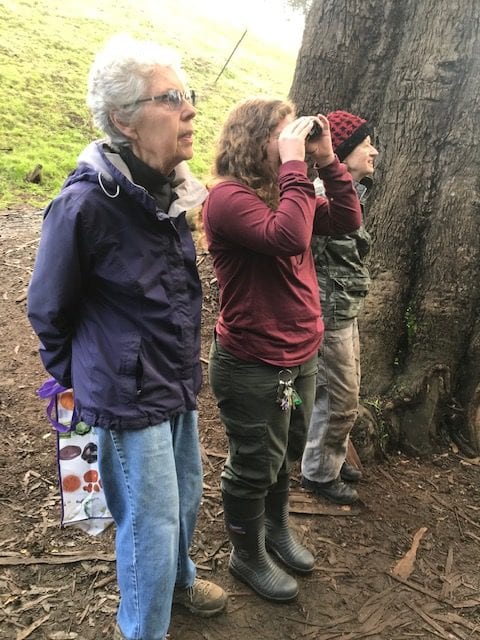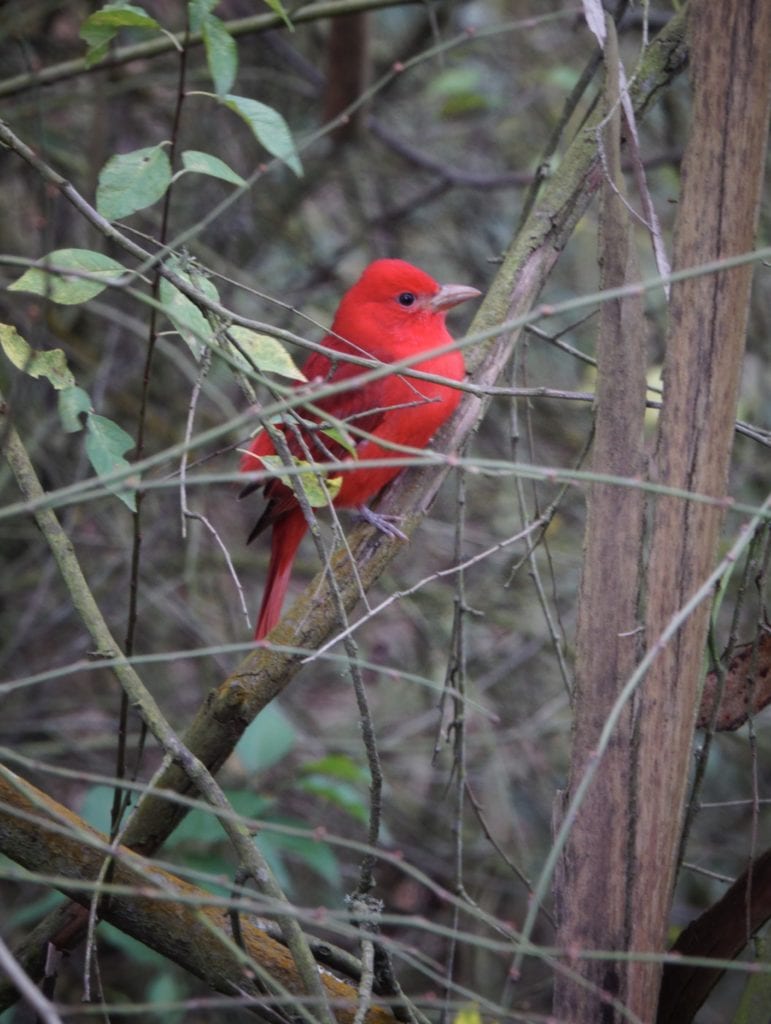
Glen Canyon was aflutter early Wednesday morning, January 22nd.
A flock of bird watchers descended on the 70-acre natural area, armed with cameras boasting the latest high-powered lenses. They stood, even sat, beneath the eucalyptus tree that houses Great horned owls each year, trained their cameras on another gum tree rooted on the bank of Islais Creek and watched with patented birder patience.
That patience paid off.
Perched on a branch, a bright red male Summer Tanager stared back at the Audubon-loving eavesdroppers and sightseers.
The vagrant songbird is far from its territory, which is the southern United States, Mexico and even northern South America.
The first sighting of the flame-colored bird was last Friday, January 17, by parents at the Glenridge Cooperative Nursery School located in the park, according to director Mame Campbell.
“I have been worried about it surviving, but maybe it is doing a good job of dodging the red-tailed hawk,” she said.
Prior to this week, this bird species doesn’t appear to ever have been sighted before in Glen Canyon. The canyon guests were alerted to the avian guest through the power of the Internet.
Ebird.org and iNatural.org proved to be efficacious apps.
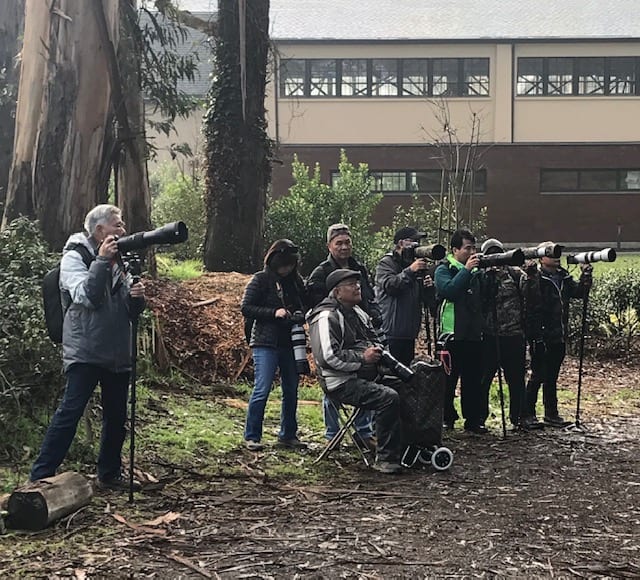
“It didn’t have to go to Mexico this year,” said Dylan Hayes, a Recreation and Park Natural Resource Division naturalist. “It’s here for a good meal and water.”
Hayes, as he is each Wednesday, was in the canyon to supervise Friends of Glen Canyon Park volunteers, several of whom had arrived on time at 9 a.m., only to be greeted by a sea of unfamiliar faces and a bird that was hundreds of miles from its familiar habitat.
“It’s off-course,” said Hayes, “It’ll get a good meal here. Water, too.”
After the previous day’s rain, Islais Creek was running high.
The tanager’s home habitat is open wooded areas, especially where there is oak, of which Glen Canyon has its fair share. They mainly eat insects, especially bees and wasps and berries. With its abundance of native and Himalayan blackberry, the migrant visitor will have ample sustenance while it remains.
That is if it stays safe.
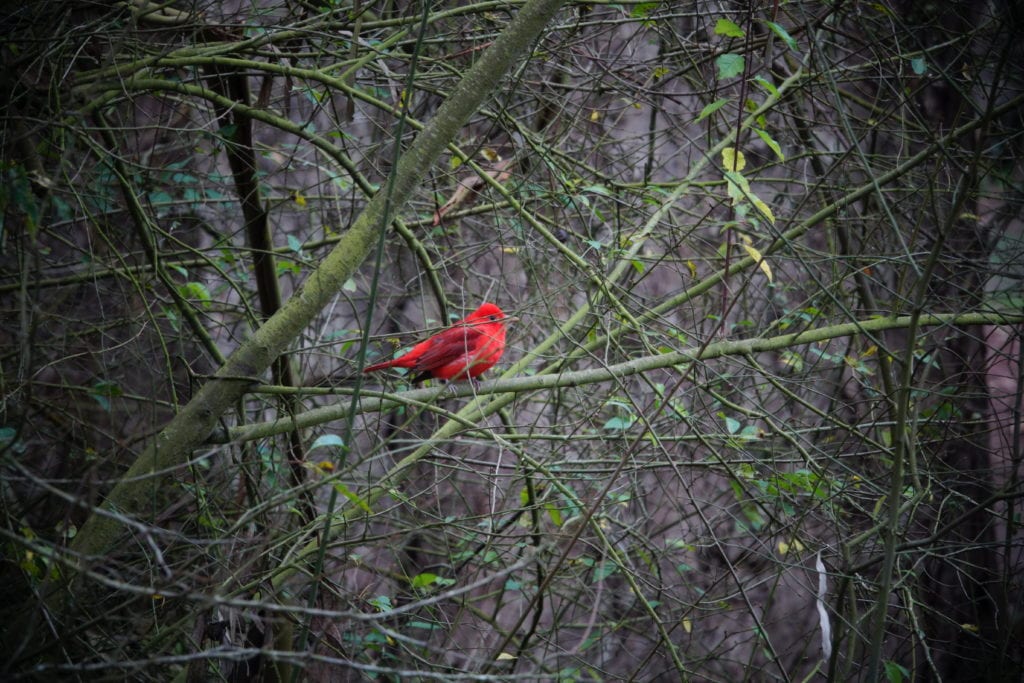
On her way out of the canyon, a dog walker stopped a Friends of Glen Canyon volunteer and told him she’d seen the tanager the day before. Sitting on a branch opposite it was a red-tailed hawk, she said, the closest she’d seen such a raptor in all the years she’d been walking her dog. She hoped the bird was still in one piece.
The volunteer said, indeed, it was.
“I’m so glad,” she said.
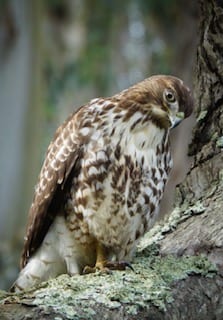
CShe and her canine companion left to take a look for themselves.
If eBird and iNatural have their way, she’ll have lots of company.
